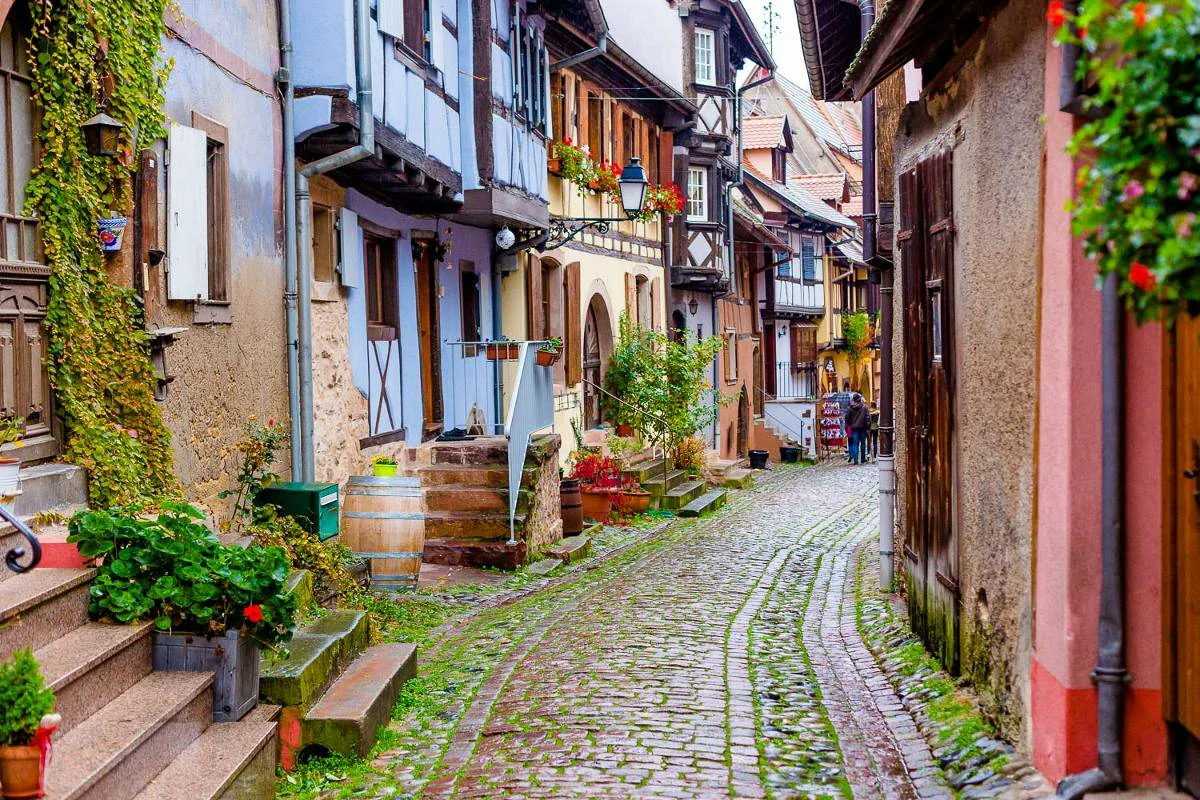Which postcard-perfect European villages look like they’re straight out of a fairy tale? Answer is – Europe boasts numerous charming villages that evoke a sense of enchantment. Some notable examples include Hallstatt in Austria, with its lakeside setting and colorful houses; Colmar in France, known for its half-timbered houses and flower-lined canals; and Giethoorn in the Netherlands, a car-free village with picturesque canals and thatched-roof houses. Each of these villages offers a unique atmosphere and stunning scenery, making them feel like they belong in a storybook.
Summary
- Introduction to the concept of fairytale villages in Europe.
- Highlighting the unique appeal of each village, focusing on their history, architecture, and natural surroundings.
- Providing practical tips for visiting, including transportation, accommodation, and local activities.
- Concluding with a reflection on the enduring allure of these magical places.
European Fairytale Villages

What Defines a Fairytale Village?
A fairytale village is not merely a place; it’s an emotion, a feeling of stepping back in time, into a world of enchantment and wonder. While there’s no single definition, certain elements consistently evoke this feeling:
Picturesque Architecture: Half-timbered houses, colorful facades, cobblestone streets, and medieval castles transport us to a bygone era.
Natural Beauty: Whether nestled by a tranquil lake, amidst rolling hills, or perched on a dramatic cliffside, fairytale villages are often blessed with stunning scenery.
Historical Significance: Many of these villages boast rich histories, with stories woven into their very fabric.
Local Charm: Friendly locals, traditional crafts, and unique festivals add to the authenticity and allure.
The Allure of European Fairytale Villages
Europe, with its rich history and diverse cultures, is home to a treasure trove of fairytale villages. These charming enclaves offer a respite from the hustle and bustle of modern life, inviting visitors to slow down and savor the simple pleasures.
“European fairytale villages offer a unique blend of history, culture, and natural beauty,” says travel writer Rick Steves. “They provide a glimpse into a slower pace of life and a chance to connect with the past.”
These villages appeal to a wide range of travelers, from history buffs and architecture enthusiasts to nature lovers and romantics. Whether you’re seeking a peaceful retreat, a cultural immersion, or simply a charming escape, you’re sure to find it in one of Europe’s fairytale villages.
Postcard-Perfect Villages in Western Europe
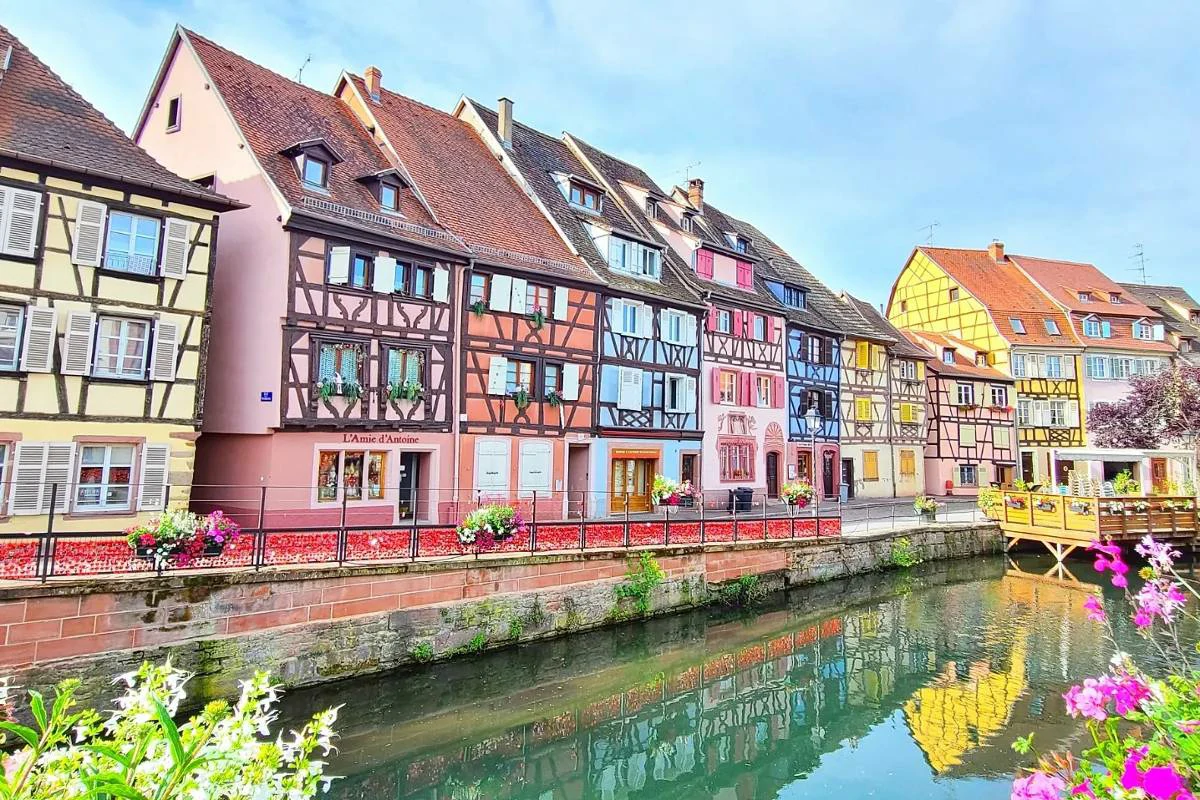
France
1. Colmar, France
Nestled in the Alsace region of France, Colmar captivates visitors with its blend of French and German architectural styles. Half-timbered houses painted in vibrant hues line cobblestone streets, while flower-laden canals wind through the town center.
“Colmar is a feast for the senses,” says travel photographer and blogger Lola Akinmade Åkerström. “Every corner reveals a new photo opportunity, from the colorful houses to the flower-filled window boxes.”
The town’s picturesque beauty is particularly enchanting during the Christmas season, when twinkling lights and festive markets create a magical atmosphere. Colmar is also a gateway to the Alsace Wine Route, offering visitors the chance to sample renowned Riesling and Gewürztraminer wines.
2. Riquewihr, France
Riquewihr, another gem along the Alsace Wine Route, enchants with its well-preserved medieval fortifications and half-timbered houses. The town’s narrow streets, adorned with colorful flowers and overflowing with charm, invite leisurely exploration.
“Riquewihr is a true step back in time,” says food and travel writer David Lebovitz. “It’s a place where you can wander for hours, discovering hidden courtyards and sampling local delicacies.”
The town’s fortified walls offer panoramic views of the surrounding vineyards, while its wine cellars provide the perfect opportunity to taste the region’s renowned vintages. Don’t miss the Dolder Tower, a 13th-century landmark offering breathtaking views of the town and surrounding countryside.
3. Eguisheim, France
Eguisheim, a circular village known for its concentric streets and colorful half-timbered houses, is a delightful stop on the Alsace Wine Route. The village’s unique layout, dating back to the Middle Ages, is best appreciated from the Château Saint-Léon Pfalz, a 13th-century castle overlooking the village.
“Eguisheim is a charming and authentic Alsatian village,” says travel writer and photographer Jodi Ettenberg. “It’s a place where you can experience the true essence of Alsace.”
The village’s central square, Place du Château, is lined with cafes and shops, while its narrow streets invite exploration. Eguisheim is also home to several wineries, offering visitors the chance to taste the region’s renowned wines.
Germany

1. Rothenburg ob der Tauber, Germany
Rothenburg ob der Tauber, a walled town perched on a hilltop overlooking the Tauber River, is a marvel of medieval architecture. Its cobblestone streets, half-timbered houses, and imposing city walls transport visitors back to the Middle Ages.
“Rothenburg is a living museum,” says travel writer and photographer James Kaiser. “It’s a place where you can experience the past in a truly immersive way.”
The town’s most iconic landmark is the Plönlein, a picturesque corner where two streets meet beneath a half-timbered house. Other highlights include the Medieval Crime Museum, the Christmas Museum, and the town walls, which offer stunning views of the surrounding countryside.
2. Füssen, Germany
Füssen, a town nestled in the Bavarian Alps, is best known as the gateway to two of Germany’s most iconic castles: Neuschwanstein and Hohenschwangau. Neuschwanstein, a 19th-century Romanesque Revival palace, is said to have inspired Walt Disney’s Sleeping Beauty castle. Hohenschwangau, a 19th-century Gothic Revival palace, was the childhood residence of King Ludwig II of Bavaria.
“Füssen is the perfect base for exploring the fairytale castles of Bavaria,” says travel writer and photographer Nomadic Matt. “It’s a charming town with plenty to offer visitors, including a picturesque old town, a beautiful lake, and easy access to the mountains.”
In addition to the castles, Füssen boasts a charming old town with colorful houses, cobblestone streets, and a lively atmosphere. The town is also located on the Forggensee, a scenic lake offering opportunities for swimming, boating, and hiking.
Netherlands

1. Giethoorn, Netherlands
Often referred to as the “Venice of the North,” Giethoorn is a car-free village in the Netherlands where waterways replace roads. Canals weave through the village, lined with charming thatched-roof houses and lush gardens. Residents and visitors alike traverse the waterways by boat, creating a tranquil and picturesque atmosphere.
“Giethoorn is a true escape from the modern world,” says travel writer and photographer Trey Ratcliff. “It’s a place where you can slow down, relax, and enjoy the simple pleasures of life.”
The village’s bridges, which number over 150, add to its charm. In warmer months, colorful blooms add vibrancy to the scene. Giethoorn also boasts a number of museums, including the Museum Giethoorn ‘t Olde Maat Uus, which offers a glimpse into the village’s history and traditions.
Belgium
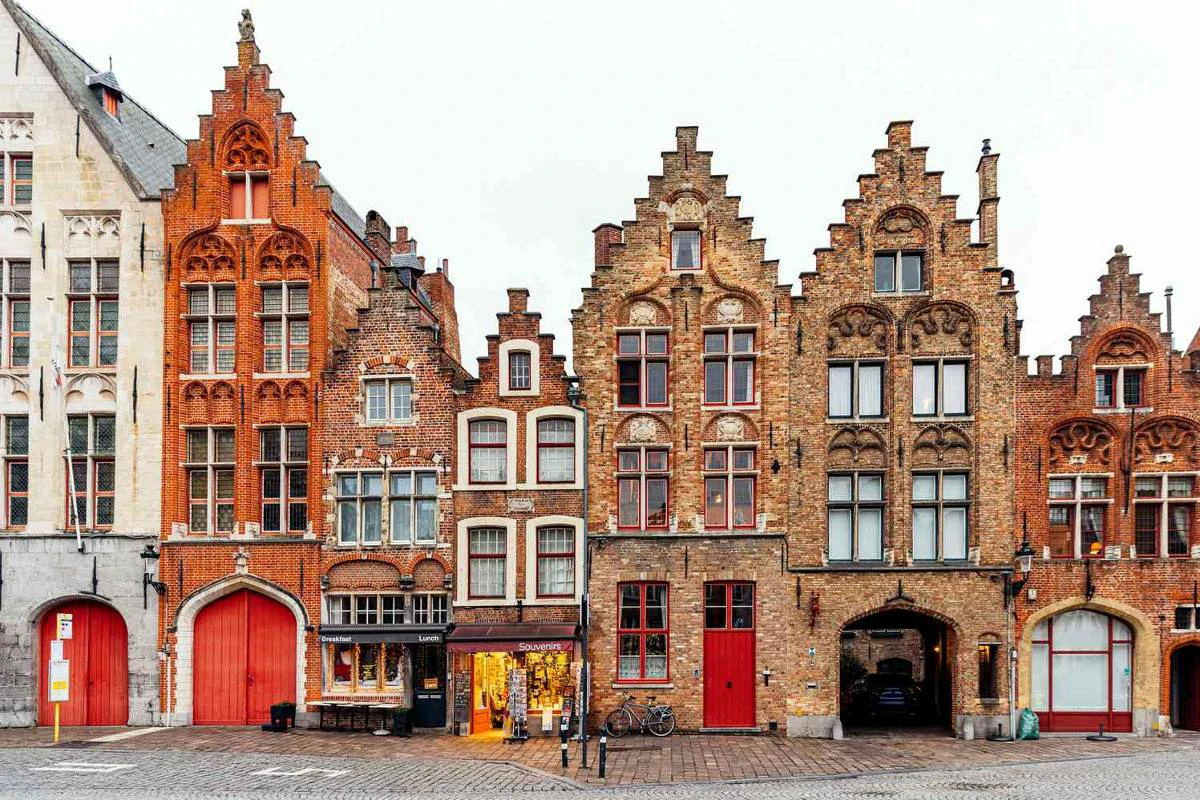
1. Bruges, Belgium
Bruges, a UNESCO World Heritage site, is a city of canals and medieval architecture. Its cobblestone streets, historic buildings, and picturesque waterways have earned it the nickname “the Venice of the North.”
“Bruges is a city that seems to have been frozen in time,” says travel writer and photographer Kirsten Alana. “It’s a place where you can wander for hours, discovering hidden courtyards, picturesque canals, and stunning architecture.”
The city’s most iconic landmarks include the Belfry of Bruges, a medieval bell tower offering panoramic views; the Markt, the main square lined with colorful guildhalls; and the Basilica of the Holy Blood, a Romanesque chapel said to house a relic of Christ’s blood.
Bruges is also known for its chocolate, lace, and beer. Visitors can indulge in chocolate tastings, learn about the art of lacemaking, and sample local brews at one of the city’s many breweries.
Postcard-Perfect Villages in Central Europe
Austria

1. Hallstatt, Austria
Hallstatt, a UNESCO World Heritage site, is a village of unparalleled beauty nestled between the glistening Hallstätter See (Lake Hallstatt) and the towering Dachstein mountains. Its pastel-colored houses, charming market square, and ancient salt mine create a scene that seems plucked from a fairytale.
“Hallstatt is a place of extraordinary natural beauty and cultural significance,” says Dr. Friedrich Idam, Director of the Hallstatt Museum. “Its unique setting and rich history make it a truly special place.”
Visitors can explore the village’s historic center, take a boat ride on the lake, or hike to the Skywalk for breathtaking views. The Hallstatt Salt Mine, one of the world’s oldest salt mines, offers guided tours that delve into the village’s salt-mining heritage.
2. Dürnstein, Austria
Dürnstein, a village perched on a hill overlooking the Danube River, is renowned for its medieval ruins, including the iconic blue and white Stiftskirche (Abbey Church). The village’s narrow streets, lined with wine taverns and charming shops, invite leisurely exploration.
“Dürnstein is a hidden gem in the Wachau Valley,” says winemaker Franz Hirtzberger. “Its rich history, stunning scenery, and world-class wines make it a must-visit destination.”
Visitors can explore the ruins of the medieval castle where Richard the Lionheart was imprisoned, hike to the Starhembergwarte for panoramic views of the Danube, or simply relax in one of the village’s many wine taverns.
Czech Republic
1. Český Krumlov, Czech Republic

Český Krumlov, a UNESCO World Heritage site, is a remarkably well-preserved medieval town with a magnificent castle towering over the Vltava River. The town’s cobblestone streets, colorful houses, and Renaissance architecture create an enchanting atmosphere.
“Český Krumlov is a living testament to the region’s rich history and cultural heritage,” says historian Dr. Petr Pavelec. “Its castle, town square, and winding streets offer a glimpse into the past.”
Visitors can explore the castle’s extensive grounds, watch a performance at the revolving theater, or simply wander the town’s picturesque streets. Český Krumlov is also home to several museums, including the Egon Schiele Art Centrum and the Museum of Marionettes.
2. Telč, Czech Republic
Telč, a UNESCO World Heritage site, is renowned for its beautiful Renaissance square, lined with colorful gabled houses and arcaded walkways. The town’s well-preserved historic center, with its Gothic castle and churches, offers a glimpse into its rich past.
“Telč is a jewel of Renaissance architecture,” says architect and urban planner Dr. Pavel Hnilička. “Its square is one of the most beautiful in Europe.”
Visitors can stroll through the square, admire the intricate facades of the houses, or visit the Telč Chateau, a Gothic castle with Renaissance interiors. The town is also home to several museums, including the Telč Municipal Museum and the Museum of the Highlands.
Switzerland

1. Grindelwald, Switzerland
Grindelwald, a village nestled in the Bernese Alps, is surrounded by some of Switzerland’s most iconic peaks, including the Eiger, Mönch, and Jungfrau. Its breathtaking scenery, charming chalets, and numerous outdoor activities make it a popular destination year-round.
“Grindelwald is a paradise for nature lovers,” says mountain guide and photographer Peter Baumann. “Its stunning mountains, glaciers, and meadows offer endless opportunities for hiking, skiing, and simply enjoying the fresh air.”
Visitors can take a cable car to the Jungfraujoch, the highest railway station in Europe, hike to the Bachalpsee, a picturesque alpine lake, or simply relax in one of the village’s many cafes and restaurants.
2. Wengen, Switzerland
Wengen, a car-free village perched on a sunny terrace above the Lauterbrunnen Valley, is known for its breathtaking views of the Jungfrau massif. Its traditional chalets, charming shops, and peaceful atmosphere make it a perfect escape from the hustle and bustle of city life.
“Wengen is a true alpine paradise,” says hotelier and tourism expert Christine Charrière. “Its car-free environment, stunning scenery, and family-friendly atmosphere make it an ideal destination for all types of travelers.”
Visitors can hike to the Männlichen, a mountain peak offering panoramic views of the surrounding peaks, take a train to the Kleine Scheidegg, the starting point for the Jungfraujoch railway, or simply enjoy the village’s peaceful atmosphere.
Postcard-Perfect Villages in Southern Europe
Italy
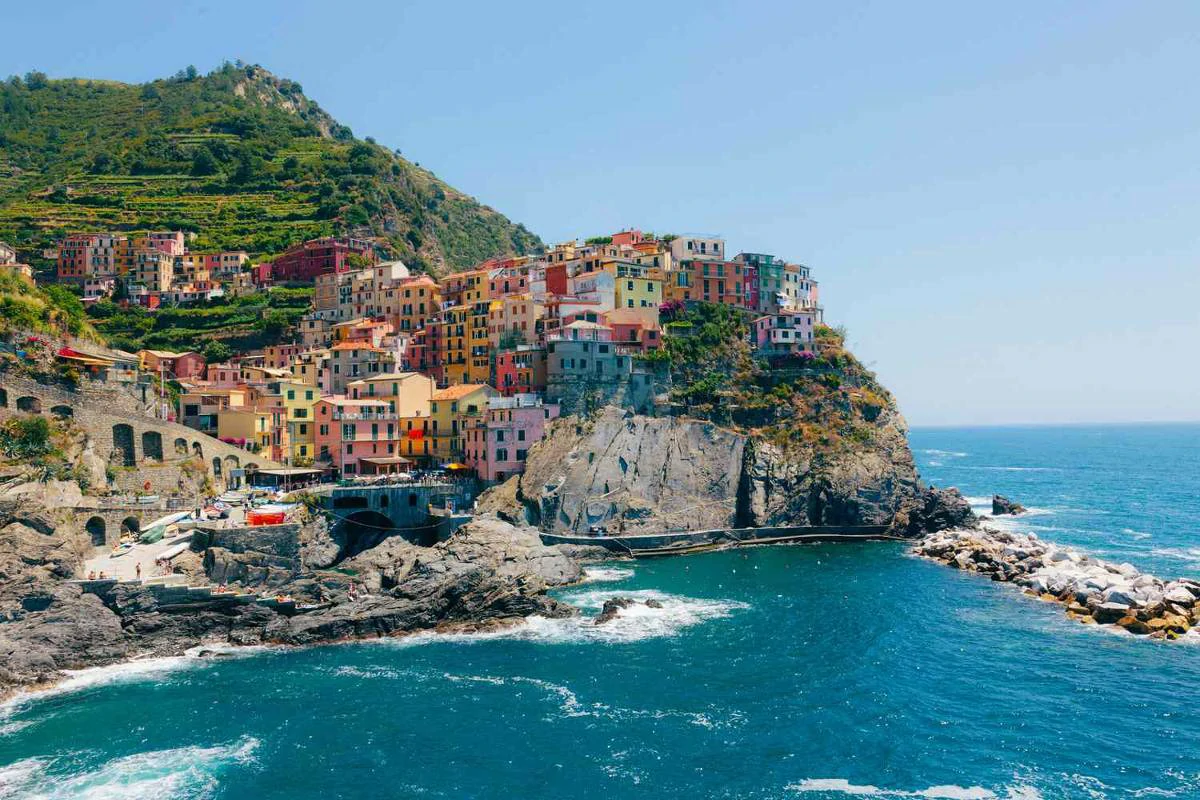
1. Manarola, Italy
Manarola, one of the five villages comprising the Cinque Terre, is a kaleidoscope of color perched on a rugged cliffside overlooking the Ligurian Sea. Its vibrant houses, stacked one atop the other, create a scene that seems to defy gravity.
“Manarola is a feast for the eyes,” says travel writer and photographer Cinque Terre Insider. “The colors of the houses, the blue of the sea, and the green of the vineyards create a truly magical atmosphere.”
Visitors can hike the scenic trails connecting the five villages, swim in the crystal-clear waters, or simply relax on the harborfront and savor the local seafood. Don’t miss the sunset from the Nessun Dorma terrace, a restaurant offering panoramic views of the village and the sea.
2. Alberobello, Italy
Alberobello, a UNESCO World Heritage site, is a town unlike any other, thanks to its unique trulli houses. These cone-shaped dwellings, constructed from limestone and topped with conical roofs, create a whimsical landscape.
“Alberobello is a testament to the ingenuity and creativity of the Apulian people,” says architect and historian Dr. Francesco Tarantini. “The trulli are a unique example of vernacular architecture and a symbol of our cultural heritage.”
Visitors can wander through the town’s two trulli districts, Rione Monti and Aia Piccola, explore the trulli churches, or visit the Trullo Sovrano, a two-story trullo house that now serves as a museum.
Greece
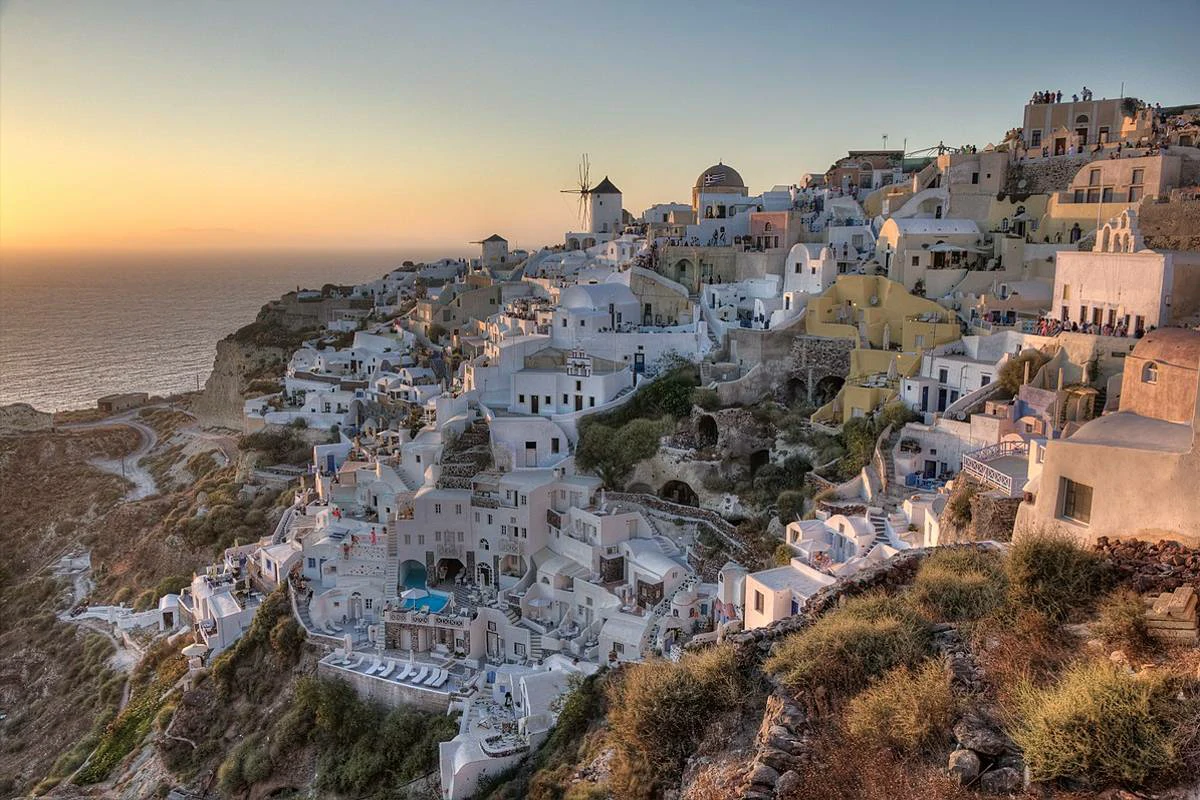
1. Oia, Italy
Oia, a village perched on the northern tip of Santorini, is renowned for its iconic whitewashed houses, blue-domed churches, and breathtaking caldera views. The village’s narrow streets, lined with art galleries, boutiques, and cafes, invite leisurely exploration.
“Oia is a place of unparalleled beauty,” says travel blogger and photographer Santorini Dave. “The views of the caldera, especially at sunset, are simply breathtaking.”
Visitors can hike the scenic trails connecting Oia with the neighboring village of Fira, take a boat trip to the volcanic islands in the caldera, or simply relax on the terrace of one of the many cafes and enjoy the view.
Croatia

1. Rovinj, Croatia
Rovinj, a coastal town on the Istrian peninsula, is a charming blend of Venetian-style architecture, colorful houses, and cobblestone streets. The town’s hilltop church, St. Euphemia, offers panoramic views of the Adriatic Sea and the surrounding islands.
“Rovinj is a hidden gem on the Croatian coast,” says travel writer and photographer Croatia Week. “Its colorful houses, picturesque harbor, and stunning sunsets make it a truly special place.”
Visitors can explore the town’s old town, wander through the bustling harbor, or take a boat trip to the nearby islands. Rovinj is also known for its fresh seafood, which can be enjoyed at one of the many restaurants lining the harbor.
Spain
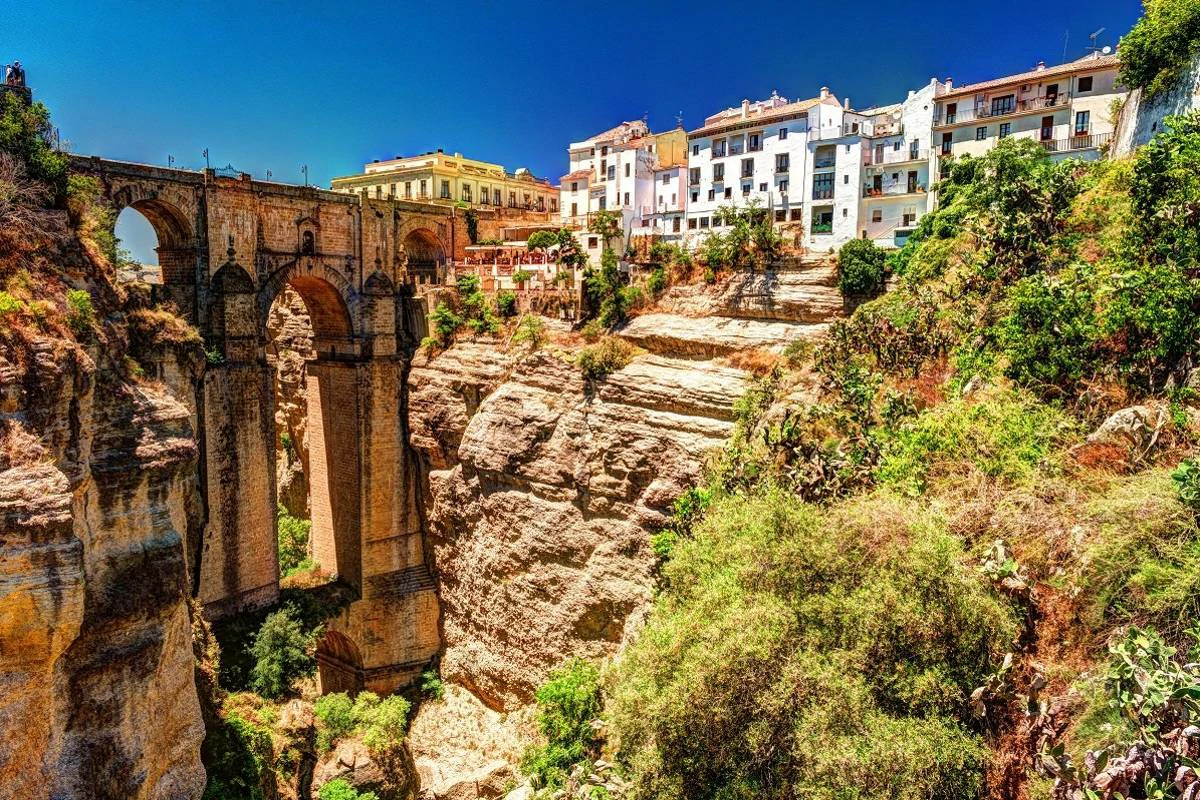
1. Ronda, Spain
Ronda, a town perched on a dramatic gorge carved by the Guadalevín River, is a marvel of engineering and natural beauty. The town’s Puente Nuevo (New Bridge), a 18th-century stone bridge spanning the gorge, is one of Spain’s most iconic landmarks.
“Ronda is a town of two halves, connected by a bridge that seems to defy gravity,” says travel writer and photographer Lonely Planet. “The views from the bridge are simply breathtaking.”
Visitors can explore the town’s old town, wander through the Alameda del Tajo gardens, or visit the Plaza de Toros, one of the oldest bullrings in Spain. Ronda is also known for its wine, which can be sampled at one of the many wineries in the surrounding countryside.
2. Cudillero, Spain
Cudillero, a colorful fishing village nestled on the Asturian coast, is a photographer’s dream. Its brightly painted houses, stacked one atop the other on a steep hillside, create a scene that seems to have sprung from an artist’s palette.
“Cudillero is a hidden gem on the Spanish coast,” says travel blogger and photographer Spain Savvy. “Its colorful houses, charming harbor, and friendly locals make it a truly special place.”
Visitors can wander through the town’s narrow streets, sample fresh seafood at one of the many restaurants, or take a boat trip to explore the coastline. Cudillero is also home to several beaches, perfect for swimming and sunbathing.
Postcard-Perfect Villages in Northern Europe
Norway

1. Reine, Norway
Reine, a fishing village nestled amidst the dramatic peaks and fjords of the Lofoten Islands, is a photographer’s paradise. Its red and white fishermen’s cabins, known as rorbuer, dot the shoreline, creating a striking contrast against the turquoise waters and snow-capped mountains.
“Reine is a place of raw beauty and unspoiled nature,” says photographer and Lofoten resident Cody Duncan. “It’s a place where you can experience the true essence of Norway.”
Visitors can hike to Reinebringen for panoramic views of the village and surrounding islands, kayak through the fjords, or simply relax on the beach and soak up the midnight sun during the summer months. Reine is also a prime spot for viewing the Northern Lights in winter.
2. Flam, Norway
Flam, a village located at the end of the Aurlandsfjord, a branch of the Sognefjord, is a popular starting point for exploring the region’s natural wonders. The Flåm Railway, a scenic train journey that climbs through steep mountains and lush valleys, is one of the most popular attractions in Norway.
“The Flåm Railway is a true engineering marvel,” says railway historian and author Anthony Lambert. “It’s a journey that takes you through some of Norway’s most spectacular scenery.”
Visitors can take the Flåm Railway to Myrdal, hike to the Stegastein viewpoint for panoramic views of the fjord, or take a boat trip to the nearby villages of Gudvangen and Undredal. Flam is also a gateway to the Jostedalsbreen Glacier, the largest glacier in mainland Europe.
United Kingdom

1. Castle Combe, United Kingdom
Castle Combe, a village in the Cotswolds region of England, is often described as the “prettiest village in England.” Its honey-colored stone houses, ancient market cross, and picturesque bridge over the Bybrook River create a scene that seems to have sprung from a storybook.
“Castle Combe is a quintessential English village,” says travel writer and photographer Mark Connolly. “It’s a place where you can experience the timeless charm of rural England.”
Visitors can wander through the village’s narrow streets, visit the 14th-century St. Andrew’s Church, or take a walk through the surrounding countryside. Castle Combe is also a popular filming location, having appeared in movies such as “War Horse” and “Stardust.”
2. Bibury, United Kingdom
Bibury, a village on the River Coln in the Cotswolds, is renowned for its Arlington Row, a row of 14th-century weavers’ cottages that are among the most photographed in England. The village’s honey-colored stone houses, ancient church, and picturesque setting on the river make it a popular destination for visitors.
“Bibury is a quintessential Cotswold village,” says local historian and author Vicki Howie. “Its historic cottages, beautiful river, and charming atmosphere make it a perfect place to escape the hustle and bustle of modern life.”
Visitors can stroll through the village, visit the Bibury Trout Farm, or take a walk along the River Coln. Bibury is also home to the Swan Hotel, a 17th-century coaching inn that has been welcoming guests for centuries.
Ireland

1. Cong, Ireland
Cong, a village on the border between County Galway and County Mayo, is steeped in history and monastic heritage. The village is home to the ruins of Cong Abbey, a 12th-century Augustinian abbey that was once a major center of learning and spirituality.
“Cong is a place of peace and tranquility,” says local historian and author Michael Gibbons. “Its monastic ruins, beautiful scenery, and friendly locals make it a truly special place.”
Visitors can explore the abbey ruins, wander through the village’s charming streets, or take a boat trip on Lough Corrib, the largest lake in Ireland. Cong is also known for its Ashford Castle, a 13th-century castle that has been converted into a luxury hotel.
2. Adare, Ireland
Adare, a village in County Limerick, is known for its picturesque thatched cottages, medieval ruins, and charming main street. The village is also home to Adare Manor, a 19th-century neo-Gothic mansion that has been converted into a luxury hotel.
“Adare is a village that seems to have been frozen in time,” says travel writer and photographer Pól Ó Conghaile. “Its thatched cottages, historic ruins, and charming atmosphere make it a truly special place.”
Visitors can wander through the village’s streets, visit the 14th-century Desmond Castle, or take a walk through the Adare Manor gardens. Adare is also a popular base for exploring the surrounding countryside, including the Cliffs of Moher and the Burren.
Tips for Visiting European Fairytale Villages

1. Transportation Options
Reaching these fairytale villages varies depending on your chosen destination. Many are well-connected by train networks, especially those in Central and Western Europe.
For instance, the Eurail Pass offers flexible train travel across multiple countries, making it an excellent option for those planning to visit several villages. For more remote locations, renting a car might be the most convenient option, offering flexibility and the freedom to explore at your own pace.
Local transportation within the villages is often limited to walking or cycling, adding to their charm and tranquility. Some villages also offer boat rides or horse-drawn carriage tours, providing a unique perspective of the surroundings.
2. Accommodation Choices
Accommodation options in European fairytale villages cater to diverse budgets and preferences. Cozy bed and breakfasts, family-run guesthouses, and boutique hotels offer a personalized and authentic experience.
For those seeking luxury, many villages boast charming castles or historic mansions converted into upscale hotels. If you’re on a tighter budget, consider staying in nearby towns or cities and taking day trips to the villages.
“Booking in advance is essential, especially during peak seasons,” advises travel expert Jean Newman Glock. “Many of these villages have limited accommodation options, and they tend to fill up quickly.”
3. Best Time to Visit
The best time to visit European fairytale villages depends on your preferences and desired experiences. Spring and autumn offer mild weather, fewer crowds, and blooming flowers in many regions.
Summer is ideal for outdoor activities and festivals, but be prepared for larger crowds. Winter transforms many villages into magical wonderlands, with Christmas markets and snow-covered landscapes.
However, consider the unique climate of your chosen destination. Some villages, like those in the Alps, experience colder temperatures and snow even in autumn, while others, like those in the Mediterranean, enjoy a warm climate year-round.
4. Local Activities and Attractions
Beyond their picturesque settings, fairytale villages offer a wealth of activities and attractions.
- Historical Sites: Explore medieval castles, ancient ruins, and historic churches that tell the stories of the past.
- Museums: Delve into local history, art, and culture at fascinating museums and exhibitions.
- Food and Wine: Sample regional specialties, local wines, and traditional dishes at charming cafes and restaurants.
- Outdoor Activities: Hike through scenic landscapes, bike along peaceful trails, or take a boat ride on a tranquil lake or river.
- Festivals and Events: Immerse yourself in the local culture by attending traditional festivals, concerts, and other cultural events.
“Each village has its own unique charm and character,” says travel writer and blogger Kiersten Rich. “Take the time to wander through the streets, chat with the locals, and discover hidden gems.”
Conclusion
European fairytale villages offer a unique blend of history, culture, and natural beauty. They transport us to a simpler time, a world of enchantment and wonder.
Whether it’s the vibrant hues of Cinque Terre or the medieval charm of Rothenburg ob der Tauber, each village offers an unforgettable experience.
But these villages are more than just pretty pictures. They are living communities with rich stories to tell. By visiting them, we not only admire their beauty but also learn about their past, traditions, and way of life. It’s a chance to slow down, savor the moment, and discover something new about ourselves.
FAQs
Are European fairytale villages expensive?
Costs vary depending on the village, season, and your travel style. While some can be pricey, there are affordable options too. Plan ahead and travel during the off-season for better deals.
How do I get around these villages?
Most are best explored on foot or by bike. Some offer boat rides or carriage tours. Trains are often the best way to travel between villages.
Any tips for visiting?
Book accommodation in advance, especially during peak season. Pack comfortable shoes for walking. Learn a few local phrases and be respectful of the culture. Most importantly, relax and enjoy the magic!
